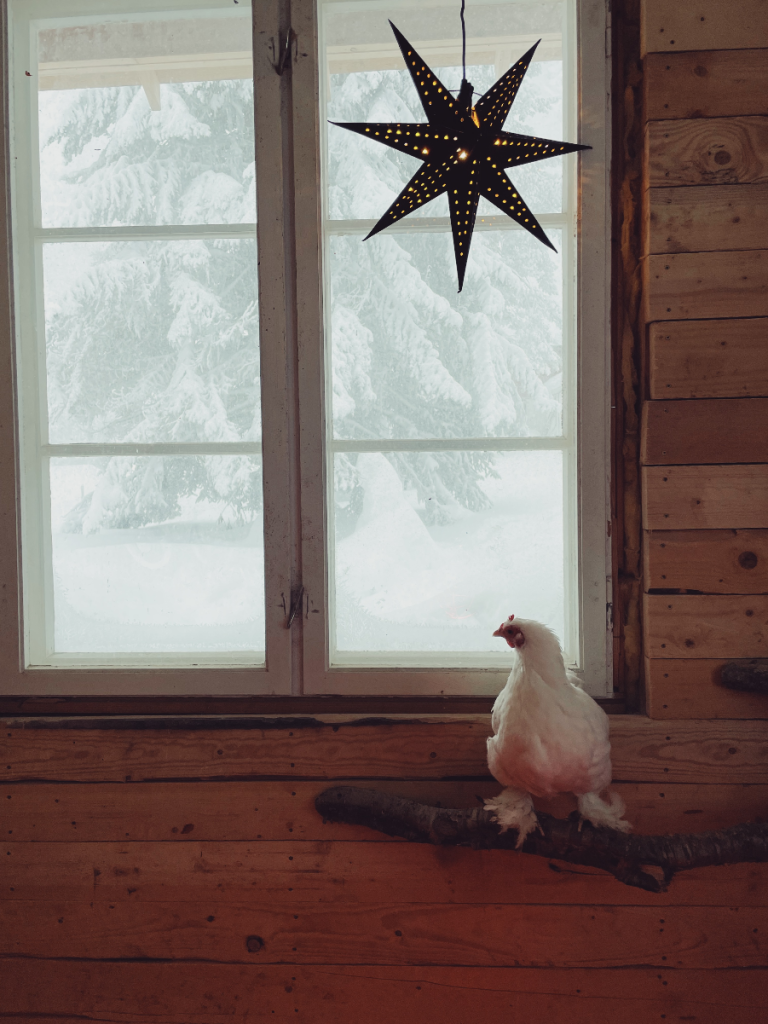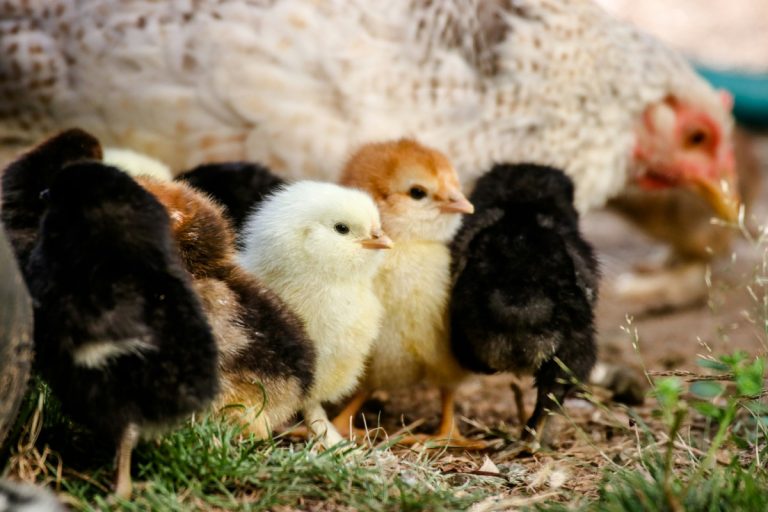6 Top Things Determining How Much Space Chickens Need
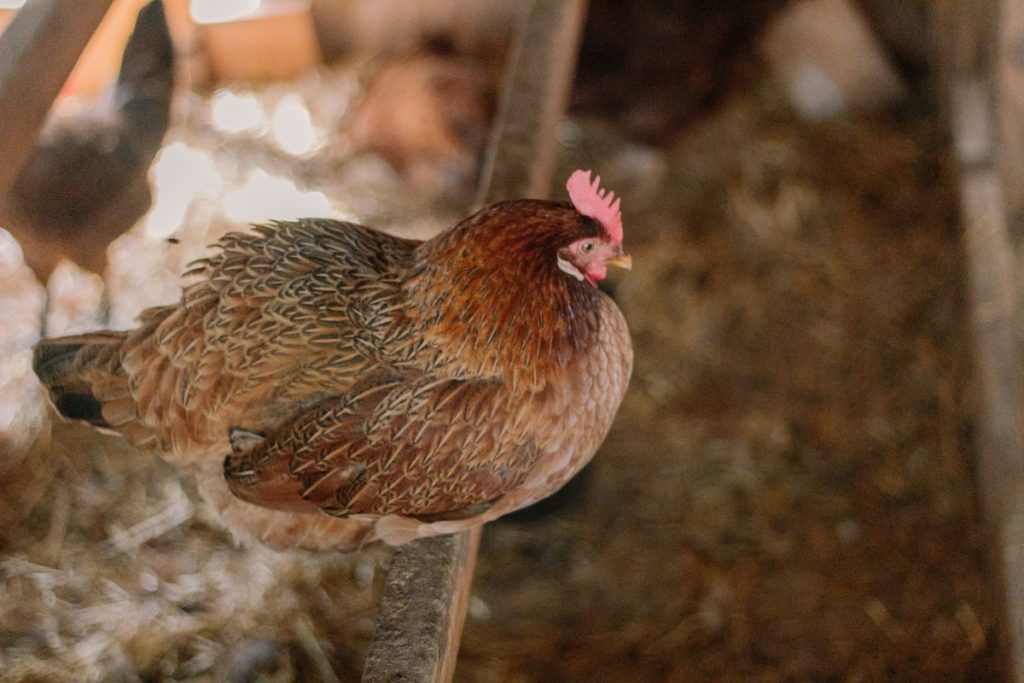
Raising backyard chickens has gained popularity in the last few years. Not only do they offer a steady source of fresh eggs but when their laying days are over you can butcher them yourself at home. Meeting your chickens’ space requirements is crucial for their welfare and making it as uncomplicated as possible to care for them.
How Much Space Do Chickens Need?
At a bare minimum, you should ensure 4 square feet of space per chicken inside the coop and 8 square feet outside in the chicken run. That’s a good rule of thumb. However, space considerations extend beyond just what the individual bird requires. Read on to learn exactly what to consider when buying or building your coop and run.
Note! Local laws, permits, and guidelines may dictate both minimum space requirements and the number of birds you can have. Contact your local government to find out what laws and ordinances apply in your city or town.
Considerations Influencing How Much Space Chickens Need
You should consider a few things before you buy or build your coop or run. Proper flock management means accounting for communal areas such as feeding and watering stations, dust bath spots, and social interaction spaces. A well-designed chicken coop allows for a harmonious living environment, encouraging socialization and reducing competition for resources.
Providing your chickens with adequate space that considers the following factors will ensure your feathered friends a happy and fulfilling life.
1. Size and Breed
Chickens are often grouped into miniature (bantam), standard and large-sized breeds. Each of these categories has their own minimum space requirements. Additionally, breed determines temperament and activity level, further influencing the amount of space they need to engage in natural behavior. Larger breeds generally benefit from 1-3 square feet of extra space.
2. Temperament
All chickens are not created equal when it comes to temperament. Mostly depending on breed, their personalities can range from docile to assertive, and these dispositions definitely impact their spatial requirements. More energetic breeds, like the Rhode Island Reds or Plymouth Rock, will benefit from larger living spaces to avoid conflicts or stress.
3. Eggs or Meat
Whether you’re keeping chickens for egg-laying or meat production will help determine the size of your chicken coop. Breeds bred for their egg-laying capabilities, like the Sussex, typically require more nesting boxes and perch space. On the other hand, meat-producing breeds, like the Cornish Cross, need more floor space to grow and move around comfortably. Overall, broilers (chicken breeds raised specifically for meat production) generally need less space than egg-layers. They generally have less energy and have much shorter lives.
4. Broodiness
The instinct of a hen to sit on and hatch eggs is an important factor to consider when buying or building a coop. Broody breeds, like Buff Orpington or Australorp, benefit from extra nesting space to ensure egg production goes smoothly. A place where the broody hen can sit uninterrupted is important for successful hatching. Chickens will force themselves into nests, damage existing eggs, and lay their own for the broody hen to hatch for them. We have a built-in cage underneath our roosts’ muck-board used for incubation, new hatchlings, and sick or injured members of the flock.
5. Local Weather and Climate
Weather plays an important role when determining how much space chickens need. If you live in a climate where your chickens can roam outdoors year-round, you will be fine with a smaller coop. However, in very cold climates you must ensure enough space for your flock to move around while locked inside. At the same time, it can be expensive to heat a large coop. Learn how to winterize your coop and run to keep costs down and your chickens happy here.
6. Size of Your Flock
Consider your purpose for raising birds and the number of chickens you want to have. Your flock size will vary. Whether you’re producing eggs or meat, just for yourself or if you also want to sell some. If you’re new to keeping chickens you should start small but still keep an ideal number for the future in mind. That way you’ll create adequate space right away and won’t have to build a new coop every time you grow your flock.
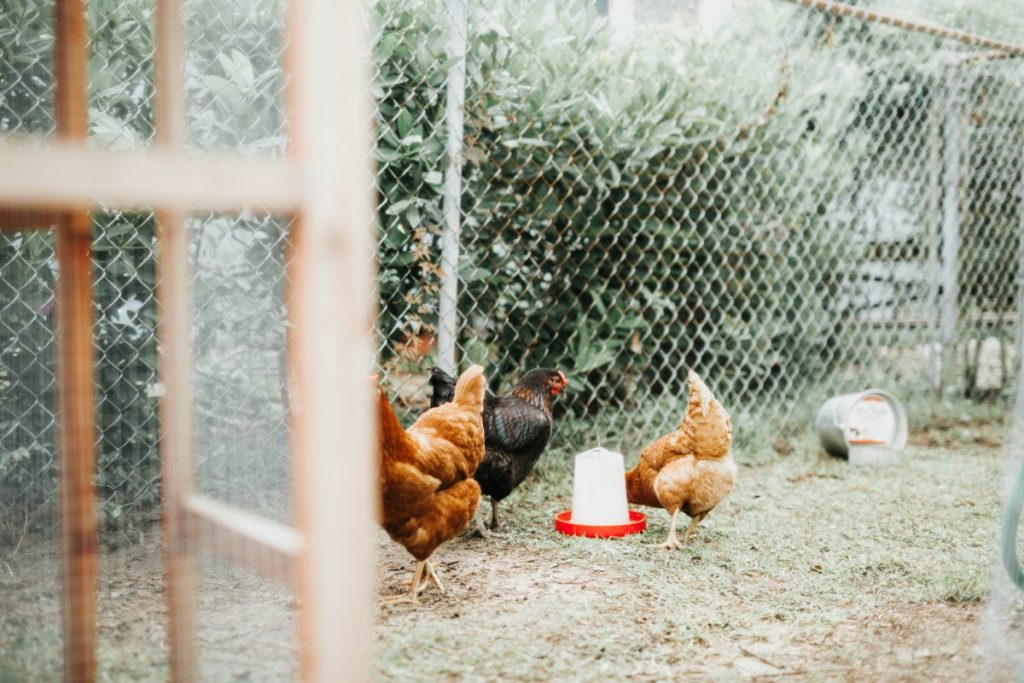
Why Is It Important For Chickens To Have Enough Space?
As animal welfare awareness increases, so does the pressure for farmers to provide evidence that their animals are healthy and happy. Most farmers want thriving animals, but all farmers want productive animals.
As homesteaders, we know that happy animals are also the most productive. When it comes to living creatures, productivity can’t be measured by mere numbers of eggs or pounds of meat. The measurable nutritional values of the products are one thing, the love and care exchanged between humans and animals, however, is something very different.
Numerous studies have investigated the impact of space on the well-being and productivity of chickens. This study, published in the British Poultry Science Journal, explored the effects of stocking density (number of chickens per square unit) on laying hens. The findings indicated that birds housed in spacious environments exhibited more natural behaviors, including foraging and dustbathing, leading to improved welfare and laying performance.
Additionally, the University of Bristol researched the space requirements of free-range laying hens. Read here how their study revealed that increasing access to outdoor areas positively impacted the health and welfare of the birds, resulting in improved egg quality and reduced mortality rates.
What happens if your chickens do not have enough space
Not only do we know intuitively that chickens thrive with more space, but now we also know there’s scientific evidence backing this up. So let’s look at the potential consequences of not providing chickens with adequate space.
Bullying
Compared to other bird species, chickens are relatively docile and social animals. However, just like other flock birds, they develop a complex pecking order within the flock. Overcrowding in a confined space restricts chickens’ ability to establish and maintain their social hierarchies, leading to increased stress, aggression, and bullying. Acts of bullying can include pecking, feather plucking, and even cannibalism. As mentioned, this behavior is less common among free-range chickens. This is also true for those with adequate square feet of coop space and a larger area outdoors.
Stress and Health
Chickens without enough room are more likely to be stressed. Stress can weaken the immune system, making them more vulnerable to diseases and infections. Furthermore, it can be challenging to keep an overcrowded small space clean. Because chickens poop everywhere they are more likely to sit or stand in filt in minimum size coop.
A small coop or run also reduces the possibilities of placement of water and food. Overcrowding and inadequate or improper placement can cause feed and water contamination. Filthy living conditions can lead to various health issues for the chickens and bacteria inside their eggs.
Parasites
Cramming chickens into smaller areas makes it easy for parasites such as lice, mites, fleas, and worms to spread rapidly. As mentioned above, stress caused by overcrowding weakens the chickens’ natural defenses against parasites, making them more susceptible to infestations. Infested chickens may show symptoms like feather loss, skin irritation, anemia, and a compromised immune system. Proper management, sufficient space, and regular cleaning are crucial to maintain a healthy flock and prevent parasite-related issues.
Egg-laying
Without appropriate room to nest and move around, your egg production may not only decrease but even completely cease. Both stress and illness can cause a drop in egg production. It’s also important to have enough nesting space. If your hens can’t find a suitable space to lay their eggs they will simply lay them right on the floor. This subjects the eggs to breakage which can lead to egg eating. If your chickens get a taste for eggs it can be very hard to make them stop breaking and eating them.
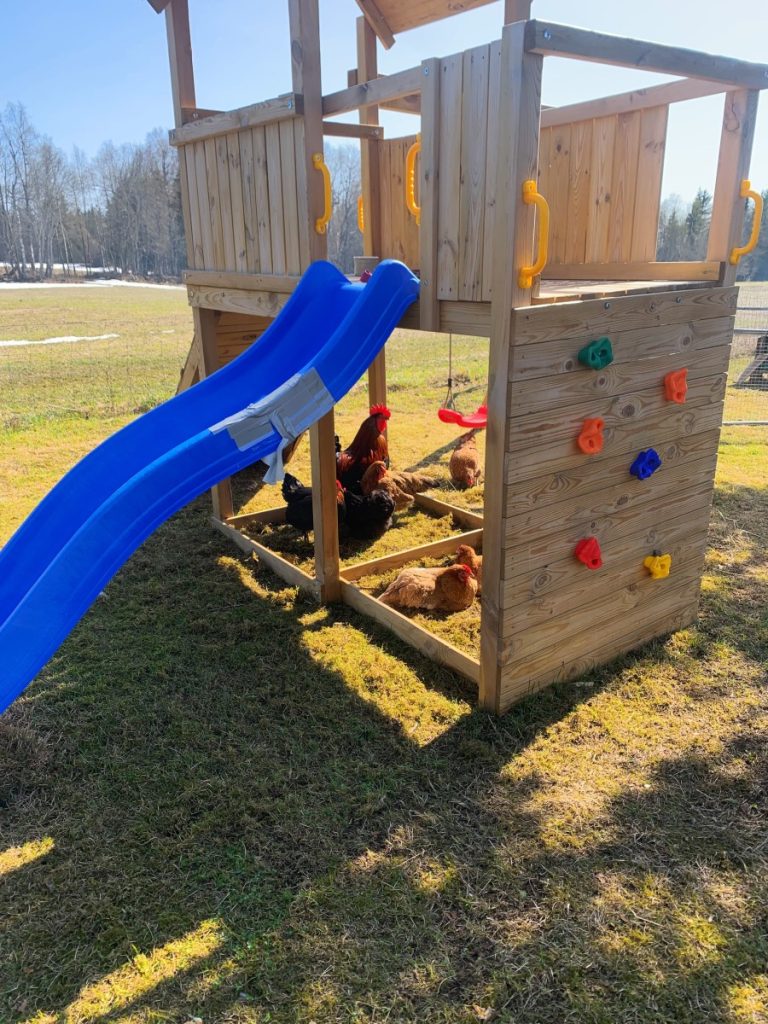
So, How Much Space Do Chickens Really Need
Coop And Run
The coop is a shelter that provides a safe and comfortable place for chickens to live, lay eggs, and roost. Although it is possible to keep chickens inside all the time, we strongly advise against it. If you can’t free-range your chickens, meaning letting them roam free, you should provide your birds with a chicken run or tunnel. A run or tunnel is a designated, outdoor space where chickens can exercise and explore while still being contained and protected.
If you can’t provide your birds with an outdoor area, you should increase the coop size by at least 50%. Less space outside means more space inside.
A chicken coop should be at least 4 square feet (0,4 square meters) per bird.
A chicken run should be at least 8 square feet (0,8 square meters) per bird.
Chicken Tractor
A chicken tractor is a portable run that allows chickens to graze on fresh grass while protecting them from predators. A tractor is not only a great way to cut feed costs, but moving the birds every day protects them from parasites. Remember, chickens can not live off grass or foraging alone. They need a grain supplement to develop normally and be healthy.
Moving chickens around a field or piece of lawn improves soil fertility by allowing the chickens to naturally fertilize the land. A chicken tractor should be a minimum of 4 sqft for laying hens and 2 sqft for meat chickens. If you move your tractor several times a day you might get away with a slightly smaller square footage.
Roosts
In the wild, chickens roost in trees to avoid predators and keep an overview of their surroundings. A roost is one of the most important things you should provide for your birds. They feel safe and can sleep comfortably when roosting.
- Each chicken should have 10 inches (25cm) of roosting bar length to perch on.
- Placing the roosting bar 18 inches above the ground should suit birds of most sizes.
- The bar should be mounted 1 foot (30cm) from the wall and 1 foot from the next bar.
- The roost can be a natural branch or a 2×2-inch wood board.
- A manure or dropping board under the roosting bar makes cleaning easy.
Free Range Chickens
Homesteaders usually associate free-range with unlimited freedom for chickens to roam outdoors, only seeking shelter at night. This definition supports a natural lifestyle for the birds. Some people define free range as access to a larger outside run. If your chickens roam completely free, without restrictions, your coop should be a minimum size of 2-4 square feet per bird. If they merely have access to an outdoor confined space, you should stick to the recommended minimum of 4 square feet per bird for medium-sized chickens.
Nesting boxes
You need 1 nesting box per 3-4 chickens. A nesting box should be 12×12 inches. It should be placed a little off the ground to provide a sense of security for them, and lined with soft bedding. Straw or wood shavings work well. We have roll-away boxes in our coop. These are lined with artificial turf as it’s soft enough for our girls to be comfortable but still allows the eggs to roll into the box without breaking. The roll-away box protects the eggs, discourages broodiness, and stores the eggs safely if we can collect them the same day.
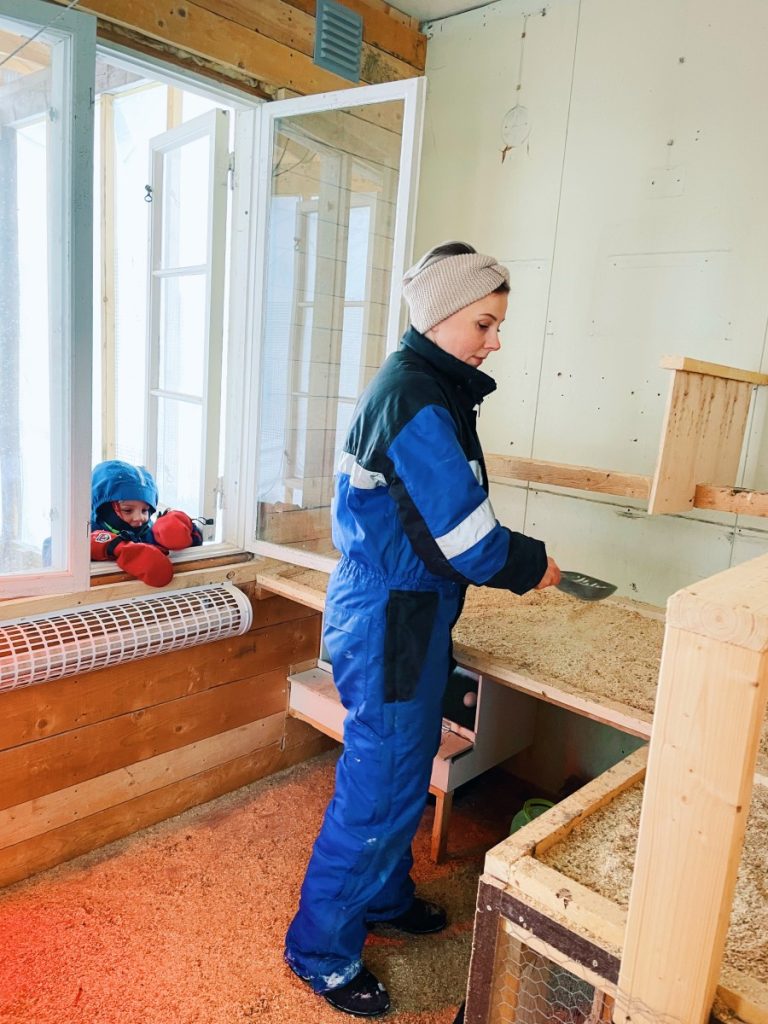
Step-by-step plan for determining the size of your chicken housing
- Read this article from beginning to end.
- Determine the breed and total number of chickens you want.
- Calculate the size of your coop and run. You can use this calculator.
- Determine the placement of your coop and run.
- Sketch out the plan, including measurements.
- Go through the abovementioned 6 considerations to see if your plan adheres to all points.
Some Encouragement
Chickens are so popular because they are versatile. You don’t have to have a rooster to have eggs. Which means you don’t have to worry about bothering your neighbors. Even with a minimum amount of space you can have a small flock of bantam chickens in your suburban backyard and be self-sufficient with eggs and fertiliser. From there you can scale up and diversify indefinitely according to the square feet of outdoor space you have available.
For the longest time, I put off getting chickens because I thought I had to learn all about them first. After several years of reading hundreds of posts and comments in chicken Facebook groups, a flock was suddenly dumped on us. Despite all that reading, I was still clueless at that point.
All I wanted was for our old ladies and our man Vegard to live happy lives. I spent a lot of time observing them in the beginning. Learning their preferred routines and seeing how their behavior changed with the weather and the changing seasons. As you acquire your flock and get to know your own chickens, you’ll also learn what they need. There is no real short answer to how much space your chickens need because it depends on so many factors.
If you live in a temperate climate I highly recommend reading this post on how to winterize your chicken coop. Taking these extra measures will make keeping chickens a lot easier and allow you the freedom to go away for a couple of days without having to pay someone to care for your chickens.
Thank You
Thank you so much for reading this post! If you found it useful I hope you’ll share it with other chicken lovers in your life. Sharing helps us reach more people, fund the development of this blog, and allow us to create more content like this. You can also sign up for our newsletter at the bottom of this site.

